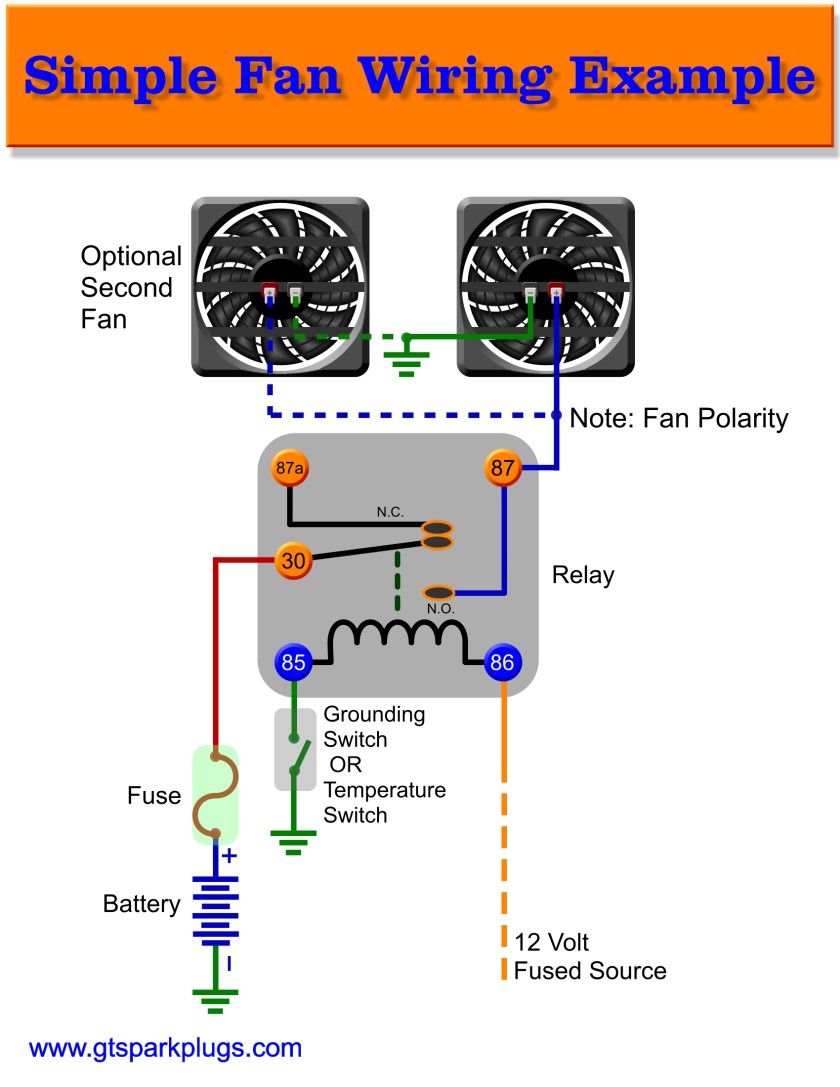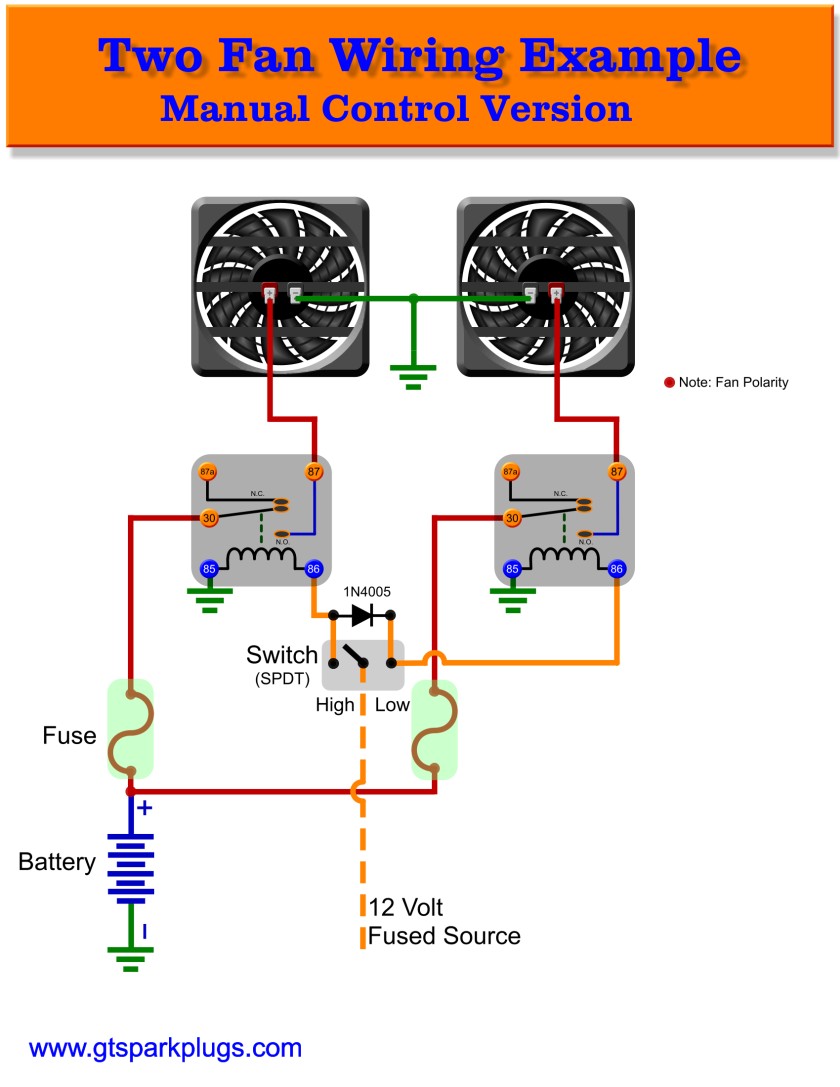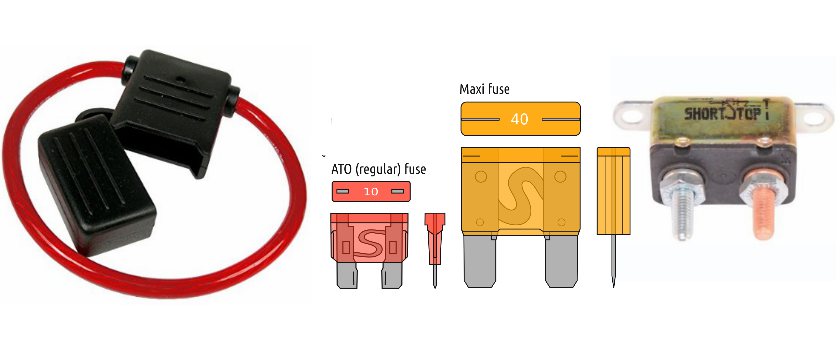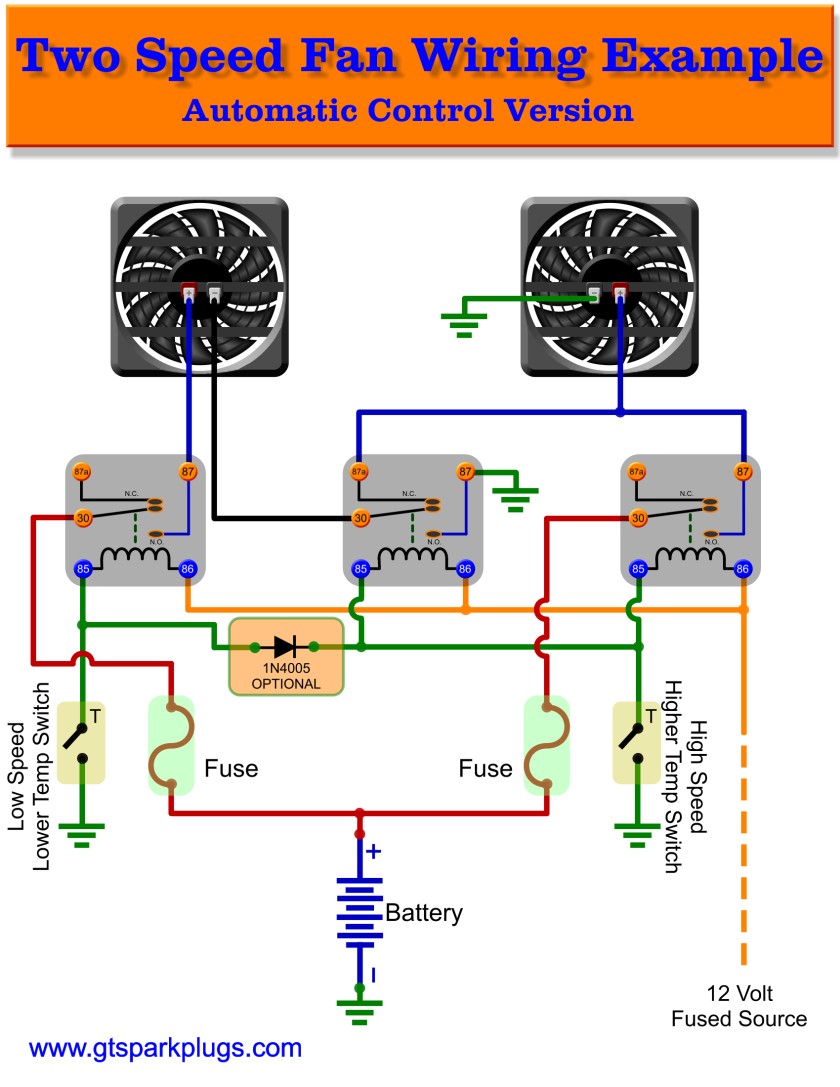Common Automotive Fan Fuses
Above - Some fan fuse solutions. You have a few options when doing fuses or circuit breakers. The only options
that is not allowed is to not use one!
Left Most - This is an inline Maxi-Fuse harness. These are recommended! Nice thick wire and waterproof case
make these a nice low cost inline fuse holder. Maxi-Fuses can be had from 20-100 Amp in rating, perfect for your
fan installation.
Center - The typical automotive ATO / ATC style fuse next to the Maxi-fuse. The ATO style can be used (with
appropriate inline holder) for lower amp fuses. As you might guess I prefer the Maxi-Fuse. It's available in different
ratings most are prefect for high current electric fans.
Maxi-Fuse Color Ratings
Yellow - 20 Amp
Green - 30 Amp
Orange - 40 Amp
Red - 50 Amp
Blue - 60 Amp
Brown - 70 Amp
Clear - 80 Amp
Purple - 100 Amp
Right Most - This is a reasonable option, the automatic reset circuit breaker. I'm not so keen on the automatic
part, but if you have a short then fix the issue you are back on your way without replacing anything. The downside is
these will cycle on and off (slow delay) until the problem is fixed. These are available in many different current
ratings.
Fuse Current Ratings
If the fan is rated at 10 amps, typically that is the running current. At start up fans can draw more amps by a good
margin. For most fans you will want to start with a 20 Amp Fuse. This will work with fans in the 10-12 Amp range
and keeps things safe. Typically a good starting point beyond that is 50% more amps in the fuse then round up to
next size.
For example if you are using an 18 Amp fan, add 9 Amps (that's 50% more) which gives 27 Amps. Their is no 27
Amp fuse so round up to 30 Amp. If running multiple fans it's often better to individually fuse them, if one shorts out
you at least have a second still working. When in doubt look at the manufactures site the typically give some
information on fuse size.
Wire Capacity
While talking about fuses it's also important to ensure you use a thick enough wire for your high power connection
to the fan. Relays take very little current, but the fan is a hog. Use the Wire Size Calculator to get you a rough size.
In all cases I would not go smaller then 14 Gauge for the smallest of fans. With wire, bigger, well thicker is better.






